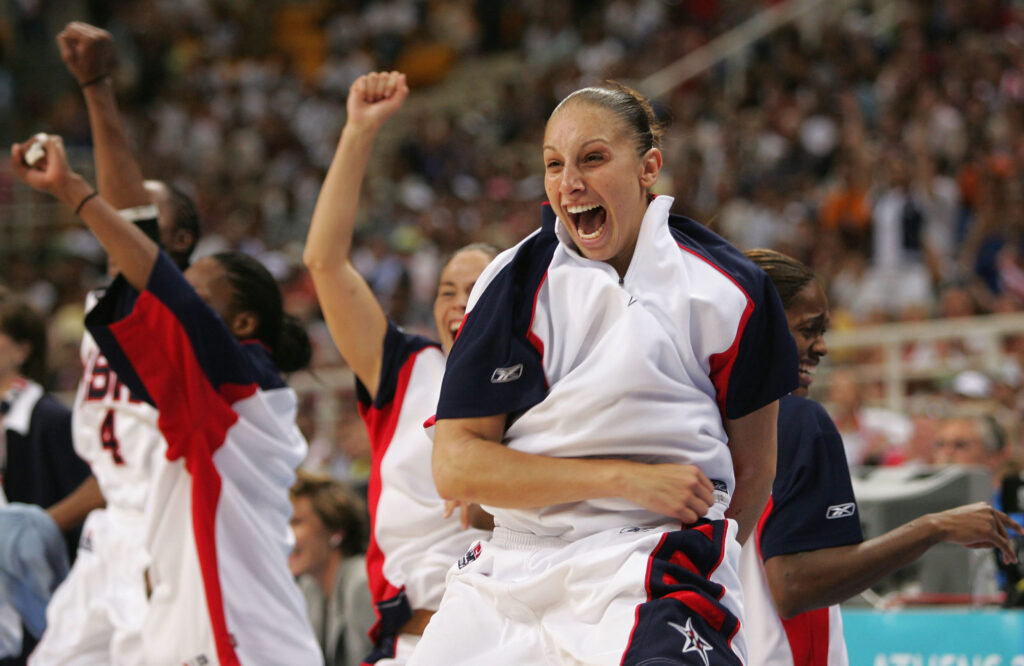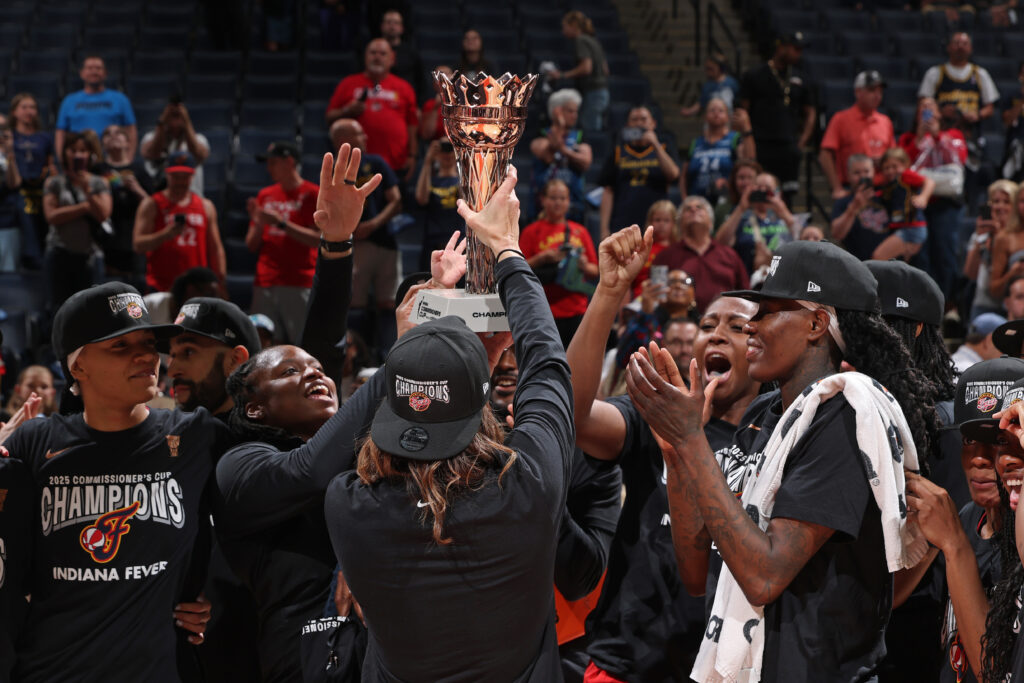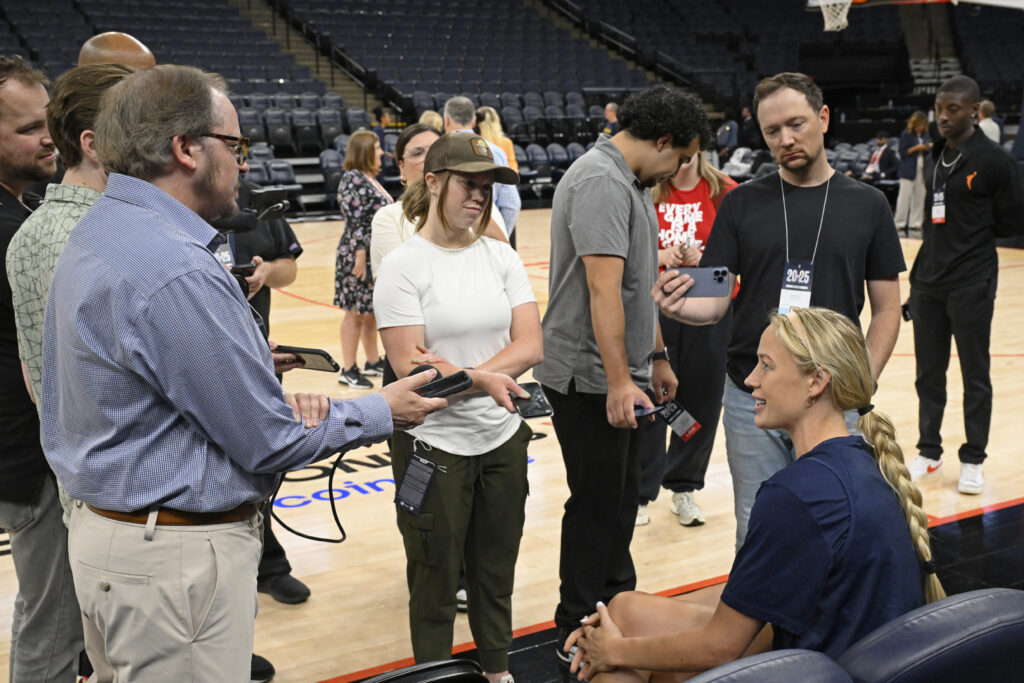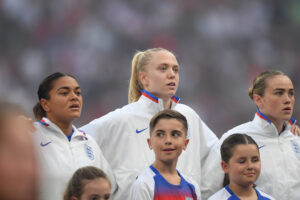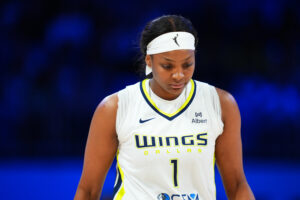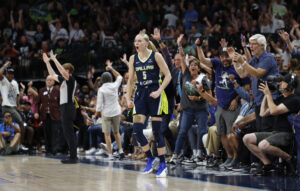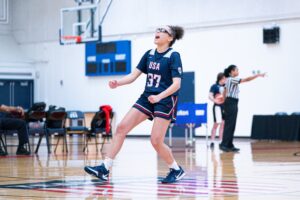During the Olympics, U.S. teams in women’s soccer, gymnastics and beach volleyball enjoy a substantial boost in viewership and public support. By comparison, the U.S. women’s national basketball team gets little fanfare. You could say the same for such sports like indoor volleyball and water polo, etc., but none of these teams have been more victorious than USA Women’s Basketball. Not by a mile.
The women’s national team has won eight out of 10 gold medals since the sport debuted in 1976 for women (not counting the 1980 boycott). This summer they are competing for a seventh gold medal in a row. The only other U.S. team to have accomplished this feat is the men’s national basketball team, which had a forty-year head start and won the first seven Olympic golds from 1936 to 1968. Besides the men’s squad, no other U.S. team even comes close to the women’s 80 percent gold-medal winning percentage.
One could argue that this is the crux of the problem. That the U.S. women are too dominant in basketball to the point that it’s not captivating, that there’s not enough parity to make it exciting. It’s the same argument that was applied to UConn when they won four NCAA titles in a row behind Breanna Stewart. It’s safe to say, looking back, that UConn’s dominance was not, in fact, bad for the sport. And neither is Team USA’s.

Granted, international basketball isn’t on the same footing as international soccer or other sports given a global footprint by the former British Empire. For women’s soccer, the World Cup and the Olympics represent the pinnacle of competition. For basketball, on the contrary, the highest level of competition is found in the WNBA. The result for USA Women’s Basketball is that making the national team is arguably harder than winning the gold medal.
As hoops legend Simone Augustus recently told LaChina Robinson on the Around the Rim pod, “You’re talking about the top players in the world, there’s only 12 spots … if you wanted to be on that team, you had to be at the tip, tip, tip top in order to make that team. That was by far the hardest team to make.”
Competition to make Team USA is so fierce that often the biggest Olympic storyline is who didn’t make the team, as was the case in 2016 when Candace Parker was inexplicably left off the roster and deprived of a gold.

This year represents another opportunity to shift the narrative around USA Women’s Basketball, which is easily the greatest global dynasty we take for granted as fans.
Yes, there was the usual bit of drama when the roster came out, as fans (rightfully) questioned how Nneka Ogwumike could be left off. But that can’t be where the story ends for Team USA, not when the quality of the product on the court is this phenomenal and the cultural influence of the players off the court is this palpable.
The popularity of the WNBA is soaring, and there are good reasons for it. The national team is a highly distilled version of the same ingredients which make the W great, which is why Team USA’s latest gold medal bid has the potential to capture the heart of the nation.
On the court, the talent has never been better
With only 144 roster spots in the WNBA, all 12 teams in the league are stacked with big names (thus the vocal calls for #WNBAexpansion), but none more so than the Seattle Storm and Phoenix Mercury. Both teams have an intimidating “Big Three” and all six of those players are now teammates on Team USA. For Phoenix, it’s Skylar Diggins-Smith, Brittney Griner and (GOAT No. 1) Diana Taurasi. For Seattle, it’s Jewell Loyd, Breanna Stewart and (GOAT No. 2) Sue Bird.
For Taurasi and Bird, there could never be enough print about what they’ve accomplished in their parallel careers. The all-time leading scorer (DT) and all-time leading dime dealer (Bird) are each playing in their fifth consecutive Olympic games and hunting down a fifth consecutive gold medal at 39 and 40 years old, respectively. Tokyo could be the last time we see the two GOATS together on the court wearing the same jersey. Savor it.
On the opposite end, this will be the first Olympics for reigning league MVP A’ja Wilson, who is only in her fourth pro season but has quickly become a face of the league. During the Olympics she’ll be sharing the court with Seattle’s “Big Three,” who bested her Las Vegas Aces in the WNBA Finals last season 3-0. Seattle and Vegas currently sit first and second in league standings.
In addition to teaming up with her biggest competition, Wilson will get to play alongside her good friend and fellow Olympic newbie Napheesa Collier. There might not be a traditional Olympics village this year, but that doesn’t mean A’ja and Napheesa won’t have some serious tea to spill on their JWS podcast, Tea with A & Phee.
You’ve also got Tina Charles, who has stepped up massively in Elena Della Donne’s absence for the Washington Mystics. Charles is currently leading all scorers in the W this season and is in the top five in rebounding. On any given night, she’s liable to post an eye-popping double-double.
An let’s not forget future Hall of Famer Sylvia Fowles (the WNBA’s all-time leading rebounder), the “Point Gawd” Chelsea Gray and defensive specialist Ariel Atkins. It goes without saying that Team USA is overloaded with talent, and that on paper, this could be one of the best women’s basketball teams ever.
Off the court, the impact has never been bigger
During the 2020 Wubble season, the WNBA received widespread acknowledgement for being a leading voice in social justice matters. Given that the league is majority Black, with a large number of LGTBQ+ athletes, these professional women’s basketball players are living at the heart of these struggles.
As Nneka Ogwumike, president of the WNBA’s Players Association, put it, “We’re 70 percent Black women. It’s just that simple really. Naturally, we are unfortunately inherently political. We don’t choose to be, it just is. That authenticity drives our action.”
The political actions taken by the WNBA last summer — from tributes to Breonna Taylor, to supporting Rev. Raphael Warnock in his U.S. Senate bid against then-WNBA owner Kelly Loeffler — were organized, unified, and powerful. Players responded in real time to events happening across the country with poise and profound thoughtfulness. Their deeply-rooted support of social justice campaigns drew in many new fans. Now, a consolidated group of these women will be taking both their skills and social beliefs to Tokyo as they represent the United States on the global stage.
With Dawn Staley at the helm, a three-time Olympic gold medalist herself and the first Black head coach for the women’s national team, there are inherent political implications even without an explicit demonstration or targeted campaign. But just as these players did in the bubble last year, expect them to lead the conversation both on and off the court.
The games themselves might not come down to the wire, but that doesn’t mean there aren’t a thousand and one other reasons to watch what these women do in Tokyo this summer. Greatness shouldn’t be taken for granted, and in the history of the Olympics, there simply is no greater team.
